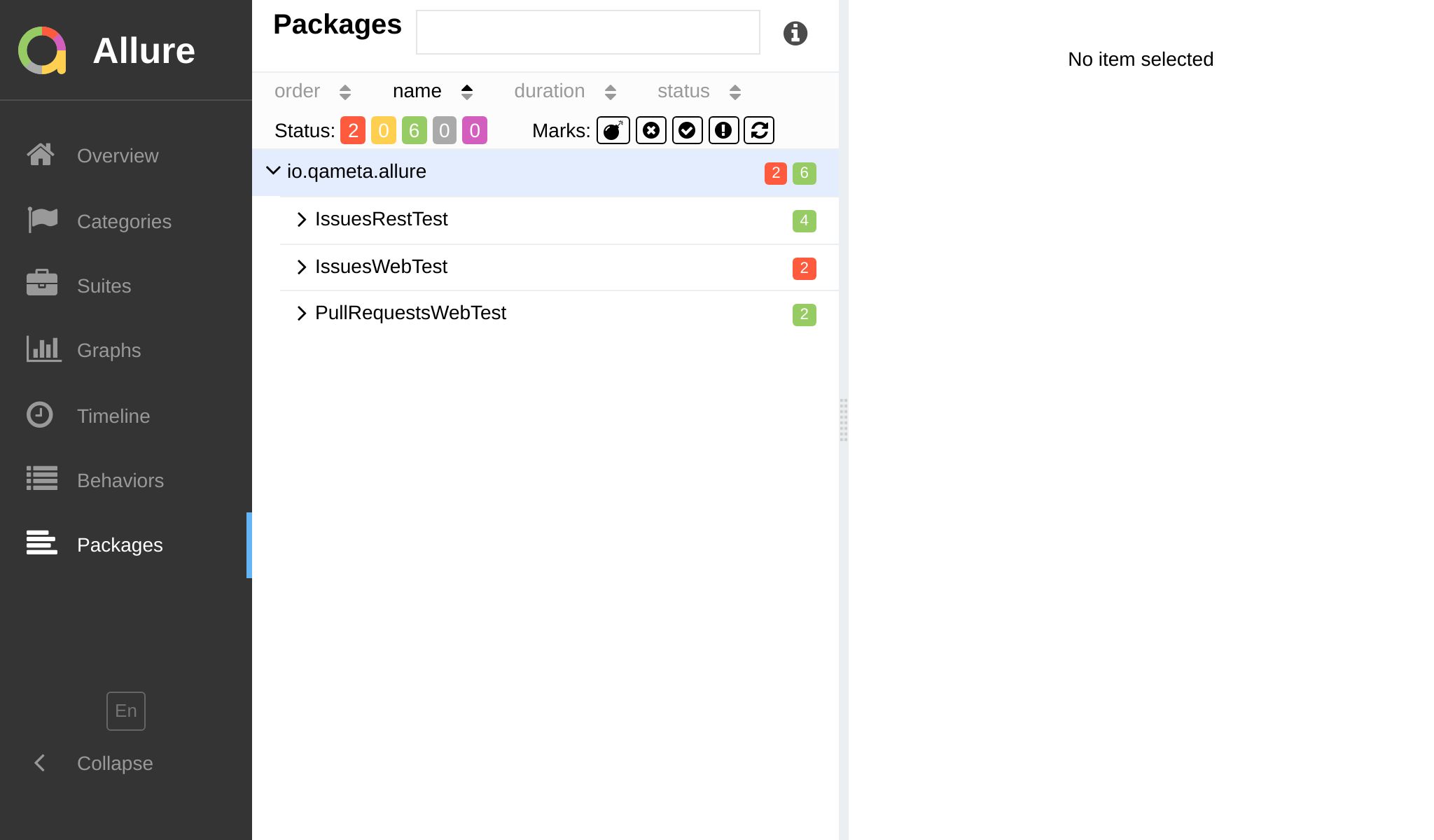By Package

This grouping feature is the least helpful outside of Java world, where packages are used to organize the codebase.
It strictly follows com.example.package.ClassName naming convention, where:
com.example.packageis a package,com.example.package.ClassNameis a test class,shouldAssertAndDoSomethingis a test method.
It doesn't map well to JavaScript ⁽¹⁾. Hence, normally you'll be able to utilize only two grouping levels: package and test method.
A couple of feasible options are:
- use
packageto group tests bypackage.jsonname; - use
packageto group tests by the file path; - use
testMethodto group tests by the full test name
- Config
- Preview
/** @type {import('@jest/types').Config.InitialOptions} */
module.exports = {
testEnvironment: 'jest-allure2-reporter/environment-node',
reporters: [
'default',
['jest-allure2-reporter', /** @type {import('jest-allure2-reporter').ReporterOptions}*/ {
labels: {
package: ({ manifest }) => manifest.name,
// ⚠️ `testClass` won't work due to the aforementioned issue
testClass: ({ file }) => file.path,
testMethod: ({ test }) => test.fullName,
},
}],
],
};
└─ @my-company/my-package
├─ Forgot password controller should return 401 if password is incorrect
├─ Forgot password controller should return 401 if user is not found
├─ Forgot password screen when loaded and typed should validate e-mail
├─ Forgot password screen when loaded should display forgot password form
├─ Login controller should return 401 if password is incorrect
├─ Login controller should return 401 if user is not found
├─ Login screen when loaded and typed should validate password
├─ Login screen when loaded and typed should validate password
└─ Login screen when loaded should display login form
Achieving three levels
The example below is simplified and does not handle edge cases like folder names with spaces, and other non-alphanumeric characters.
So, especially curious souls may try this hacky configuration to get all three levels, but it's an open question whether it's worth the effort:
/** @type {import('@jest/types').Config.InitialOptions} */
module.exports = {
testEnvironment: 'jest-allure2-reporter/environment-node',
reporters: [
'default',
['jest-allure2-reporter',
/** @type {import('jest-allure2-reporter').ReporterOptions}*/
{
labels: {
package: ({ filePath }) => filePath.slice(0, -1).join('.'),
testClass: ({ filePath }) => filePath.join('.').replace(/\.test\.[jt]s$/, ''),
testMethod: ({ testCase }) => testCase.fullName,
},
}],
],
};
This example is a proof of concept to help you understand better how this grouping strategy was supposed to work in the first place.
It demonstrates that if you map file paths like src/components/MyComponent.test.js to pseudo-classes like src.components.MyComponent,
the generated report will recognize these labels and group tests accordingly.